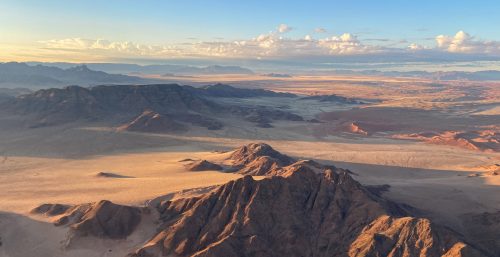
Have you ever visited a place that feels like another planet? Namibia is just that – several planets, actually, as you traverse its extraterrestrial terrain from one end of the country to the other. I’m fortunate enough to have been twice now; the first being a surprise trip (the best kind) two years ago for a milestone birthday to Sossusvlei where we climbed Big Daddy (a form of protest about my age); the second a few months ago when close friends invited us along on a rescheduled trip that was originally postponed due to the pandemic.
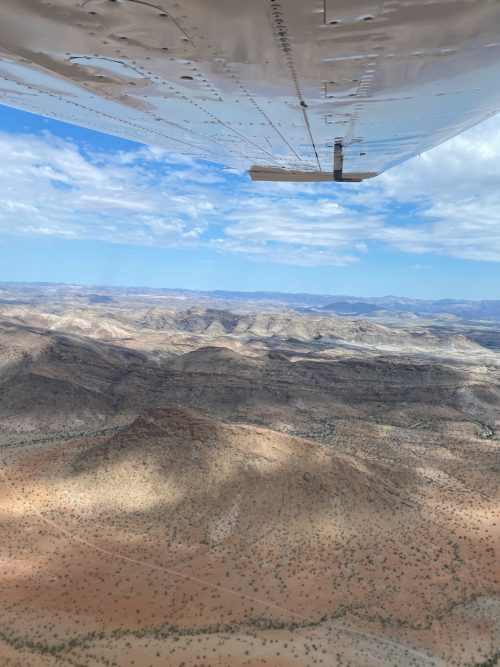
Reaching the far-flung corners of the planet requires intrepid logistics – in this case, the world’s smallest plane. There are SUVs that are bigger and amusement park rides sturdier. Our friend Sam, the slightest of the group, was relegated to the back seat (aka the trunk/boot) in and amongst the luggage while I was seated as co-pilot and instructed not to touch the yoke, pedals or any knobs or buttons that were all just centimetres away from my various body parts. It was a long two hours’ journey north to Hoanib Valley.

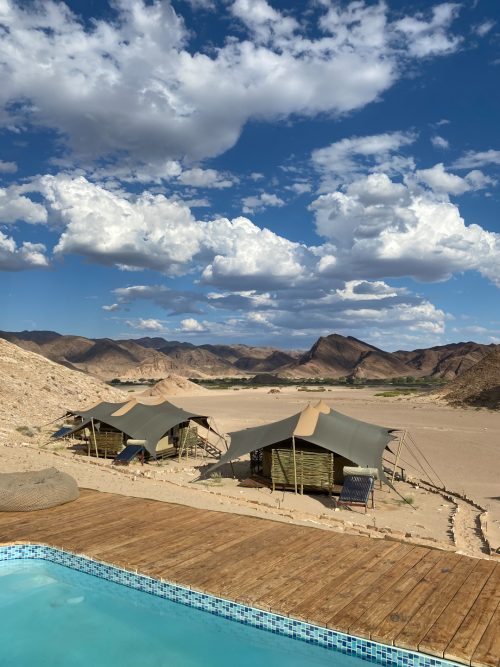
Flying into Hoanib, about 250km from the Angolan border, you are struck by the realisation that this must be one of the most deserted places on earth – a thought I had many times on this trip, continually wondering just how many people have and ever will be here. Giant rock formations jut out of cracked earth and signs of life – plants, animals – are scarce. While game isn’t prolific you may see desert-adapted elephants and lions and the odd giraffe pruning what they can off a rare tree. Instead, you experience landscapes, textures and colours that are all new to you. A topographic safari, perhaps?

This is home to the Himba people, the women famously covered in a mixture of red ochre and fat who bathe only in smoke, and one of the few remaining cultures that live according to the traditions of their ancestors. We were eager to see them, fascinated by their beauty and customs, but unsure if they felt the same. This is a question the safari industry across Africa grapples with – how to balance the earnest curiosity which has brought travellers here and a respect for the privacy of people who live there.
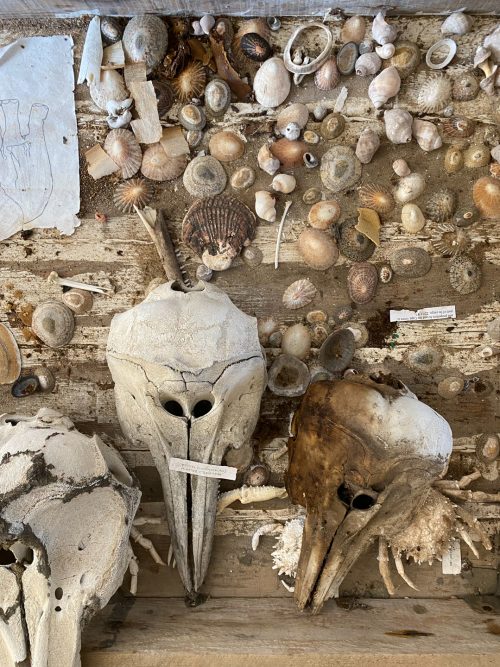

Our next stop was a short flight to the Skeleton Coast, named for the shipwrecks laid to rest here thanks to the turbulent Atlantic currents that pound the coastline. This stretch of the country is where rolling sand dunes meet ocean, like fresh meringue made each day thanks to the winds that shape them. On the two-hour drive from the airstrip in Möwe Bay, we made a quick self-guided visit to the “museum” of collected shells and bones and a stop by the seal colony, jumping out to examine the last remains of maritime hulks and abandoned mining equipment.
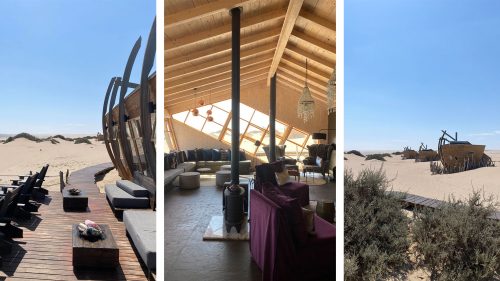


Shipwreck Lodge, a Natural Selection property along with Hoanib Valley Camp, is designed to look like just that – the ribs of vessels cast ashore. We spent our days here on the dunes: sundowners on the highest point, quad biking over the mounds that tower towards the sky, a beach walk to watch the sunset on yet another dune. We couldn’t get enough. Here too, wildlife is not the draw. Each morning there were reports and tracks around our rooms from the elusive desert-adapted lions making their way down to the beach in search of food. Sadly, we never could find them.
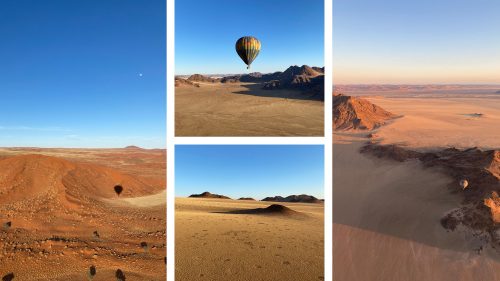
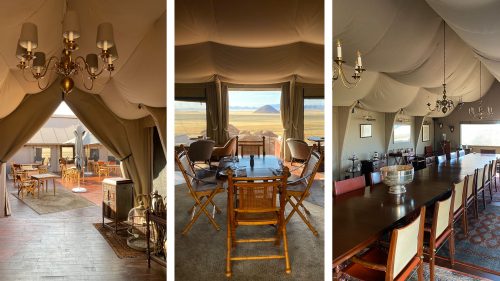
Flying two hours south to Sossusvlei and its iconic red dunes, we left our friends in good hands at the recently reopened Sossusvlei Desert Lodge (where we had stayed on our trip prior), making the one-and-a-half-hour drive south to Sonop. A Zannier Hotels property, owned by an Italian-French family of the same name with a history in fashion and winemaking, Sonop is set on a horse farm among golden fields, with the lodge built into a cluster of boulders. Balancing on the rocks, connected by a series of boardwalks, the suites and guest areas are filled with crystal and antique campaign-style furniture. It is easily one of the most remarkable lodges I have ever been to. I chose it not just for its style, but for its location – it was a day trip from a place near the top of my list: Kolmanskop.
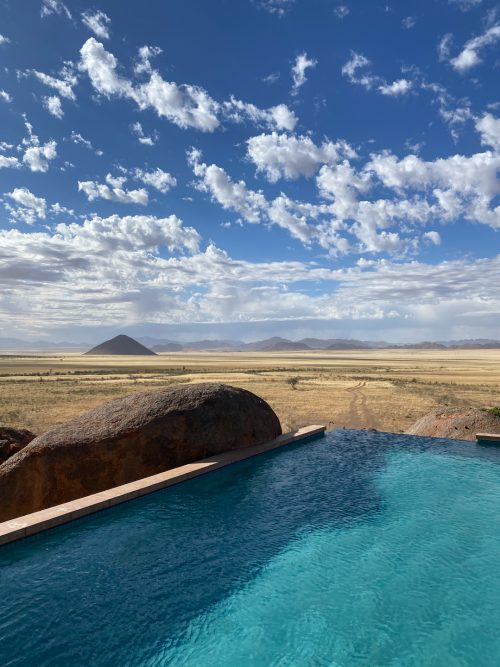
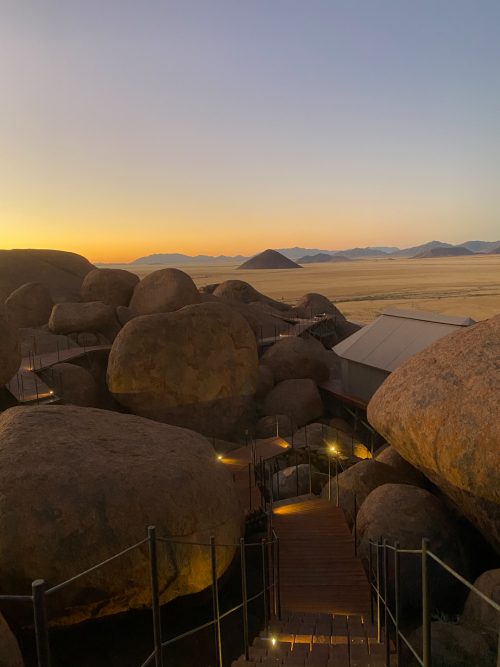

A popular destination for photographers, you may have seen the images of the abandoned former mining town, once home to 1,300 people producing roughly 12% of the world’s diamonds and, curiously enough, to the first X-ray machine in Africa. Walking through the town’s buildings swallowed by sand was yet another other-worldly experience. The faded paint and corroded wallpapers were haunting and beautiful in equal measure, as every corner, every shadow created another indelible image.


Back in Windhoek, we camped out waiting for our PCR test results at Omaanda, another Zannier property but on the other side of the dial aesthetically. In a Belgian-meets-African style, round thatched-roof huts are filled with earthy linens and traditional carved wooden tables. Set just outside the city, the 9,000-hectare Zannier Reserve focuses on the relocation and reintroduction of endemic species. Their relationship with neighbouring N/a'an ku sê, a wildlife rehabilitation centre, gives guests the opportunity to view animals in a different way while contributing to their care. Rescued as a cub and raised by humans, Kobu, a cheetah, allowed us to accompany him on his morning walk. We trailed him through the tall grass, stopping to let him lie. As we grew more comfortable with each other’s company he allowed me to walk beside him. I felt truly connected to him for a few moments; Kobu let me into his world, and I am grateful to have visited it, whichever planet I happened to be on.

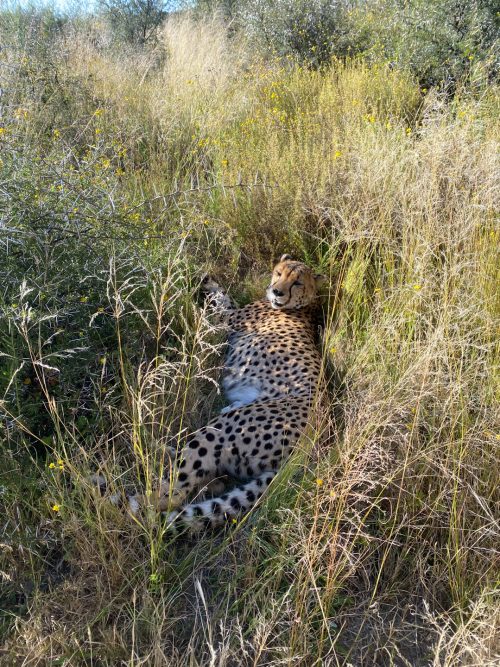
Filed under: Safari Style
Subscribe for Weekly Stories
Comments (2):
25 August 2021
I love this. Life on Mars or on the Moon. Namibia is both. Thank you for this blog; it's so true, so awesome, so unbelievable.

Weddings in the Mara